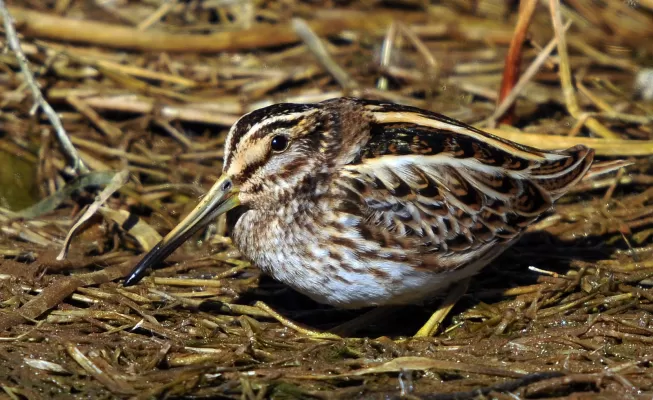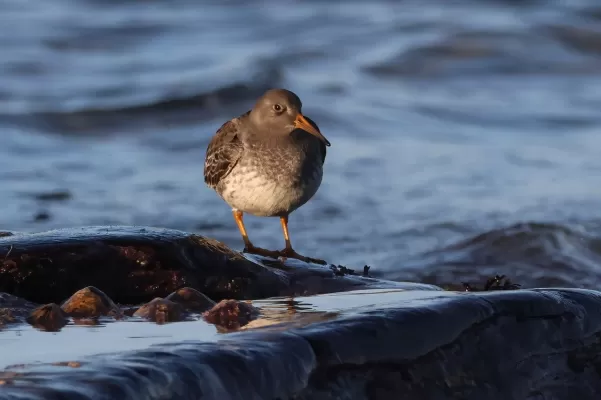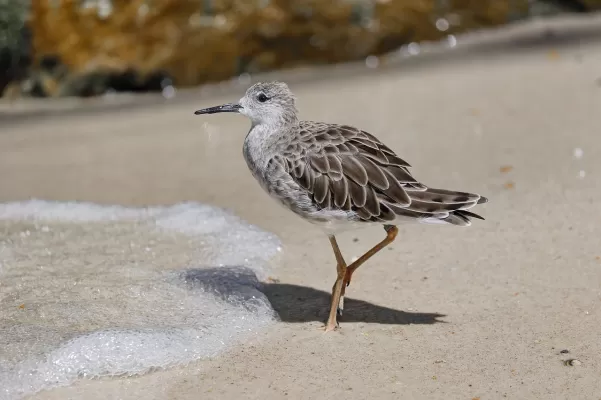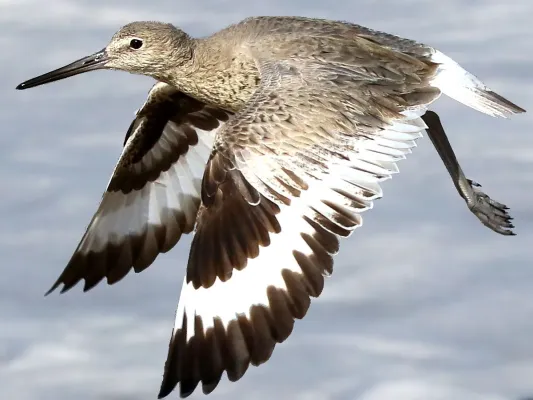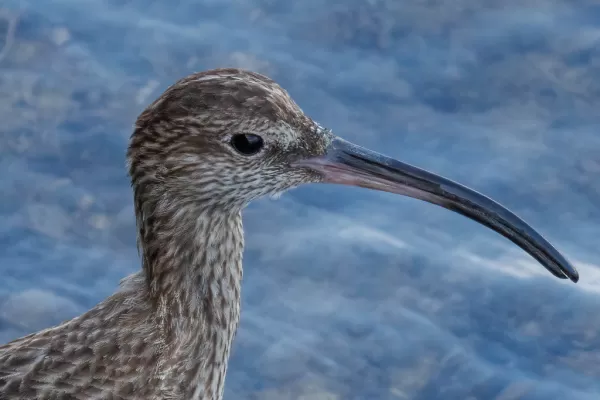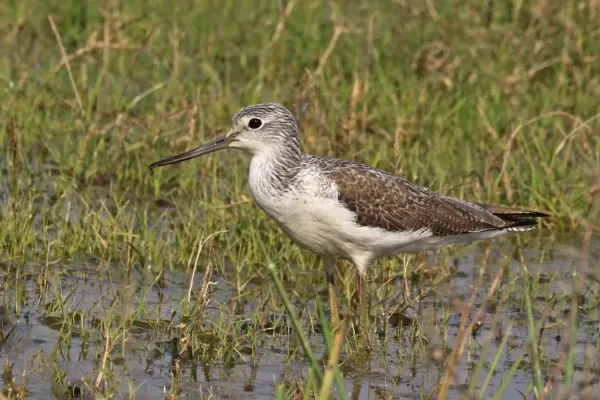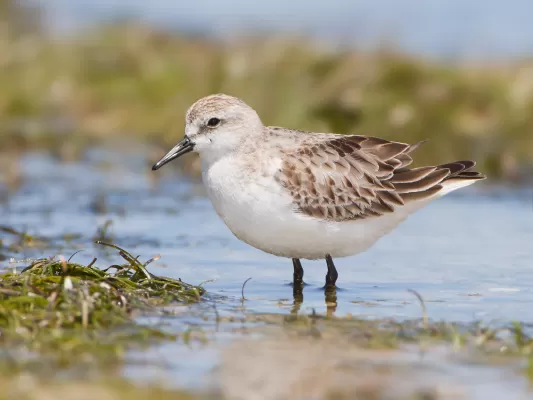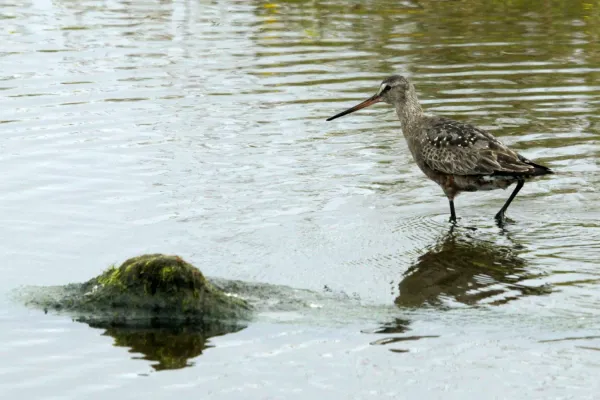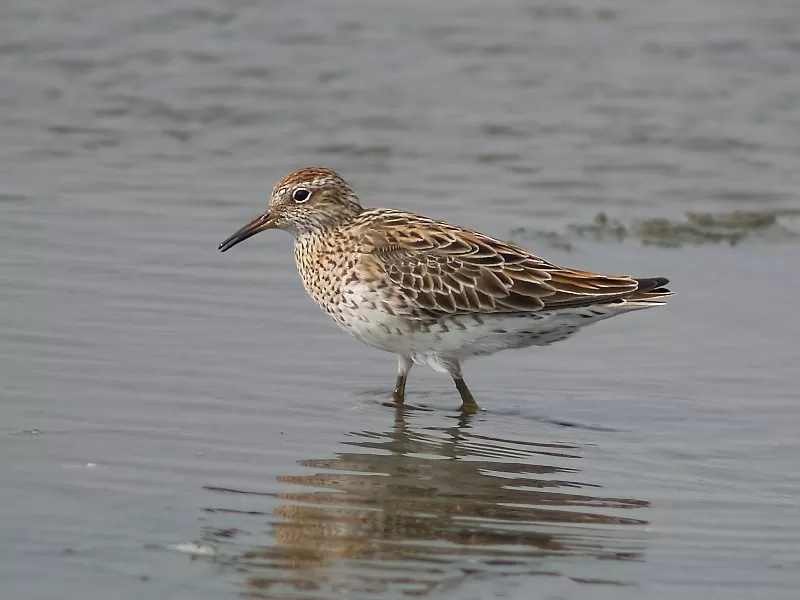
Sharp-tailed Sandpiper
Sharp-tailed Sandpiper
95
47 minutes ago
Not yet spotted on Fladder
Spotted
The Pectoral Sandpiper, Calidris acuminata, is a medium-sized, long-distance migratory shorebird belonging to the family Scolopacidae. It is readily identified by its distinctive breast streaking that abruptly cuts off at the belly, giving it a 'pectoral' band. This species undertakes one of the longest migratory journeys of any bird, traveling between its Arctic breeding grounds and Southern Hemisphere wintering areas.
Where to spot
During the breeding season, Pectoral Sandpipers are found in Arctic tundra, particularly in damp, tussocky areas. During migration and winter, they can be spotted in a wide variety of wetlands, including freshwater and brackish marshes, flooded grasslands, rice paddies, sewage farms, and less frequently, on coastal mudflats and sandy beaches. Look for them in areas with short to medium vegetation near water.
How to spot
Observe its characteristic hunched posture while foraging, often walking slowly with its head down, probing for food. Males perform elaborate display flights during the breeding season, involving inflated throat sacs and distinctive hooting or booming calls. On migration, they are typically quieter, but may give a low, reedy 'krrr' or a soft 'prrrip' call. They often associate with other shorebird species.
When to spot
Pectoral Sandpipers are most active during daylight hours. They arrive on their Arctic breeding grounds from late May to early June and depart by August. The species is highly migratory, with significant movements occurring during the spring (March-May in the Northern Hemisphere) and autumn (August-November in the Northern Hemisphere) migrations. They spend the Northern Hemisphere winter months (October-April) in South America, Australia, and New Zealand, where they can be observed during the Southern Hemisphere summer.
Where to spot
During the breeding season, Pectoral Sandpipers are found in Arctic tundra, particularly in damp, tussocky areas. During migration and winter, they can be spotted in a wide variety of wetlands, including freshwater and brackish marshes, flooded grasslands, rice paddies, sewage farms, and less frequently, on coastal mudflats and sandy beaches. Look for them in areas with short to medium vegetation near water.
How to spot
Observe its characteristic hunched posture while foraging, often walking slowly with its head down, probing for food. Males perform elaborate display flights during the breeding season, involving inflated throat sacs and distinctive hooting or booming calls. On migration, they are typically quieter, but may give a low, reedy 'krrr' or a soft 'prrrip' call. They often associate with other shorebird species.
When to spot
Pectoral Sandpipers are most active during daylight hours. They arrive on their Arctic breeding grounds from late May to early June and depart by August. The species is highly migratory, with significant movements occurring during the spring (March-May in the Northern Hemisphere) and autumn (August-November in the Northern Hemisphere) migrations. They spend the Northern Hemisphere winter months (October-April) in South America, Australia, and New Zealand, where they can be observed during the Southern Hemisphere summer.
Male Pectoral Sandpipers possess a remarkable inflatable throat sac, which they expand during their elaborate display flights to produce booming calls to attract mates.
Loading...
Spotted
- Recently spotted
- 1726 (Seen in the last 3 months)
- Last spotted
- 47 minutes ago
Monthly observations
No observations
Loading...
Nothing spotted yet


